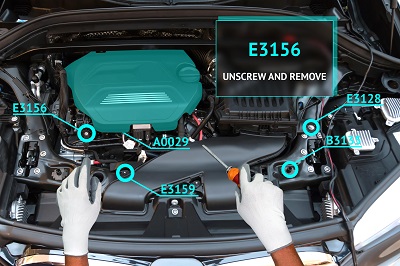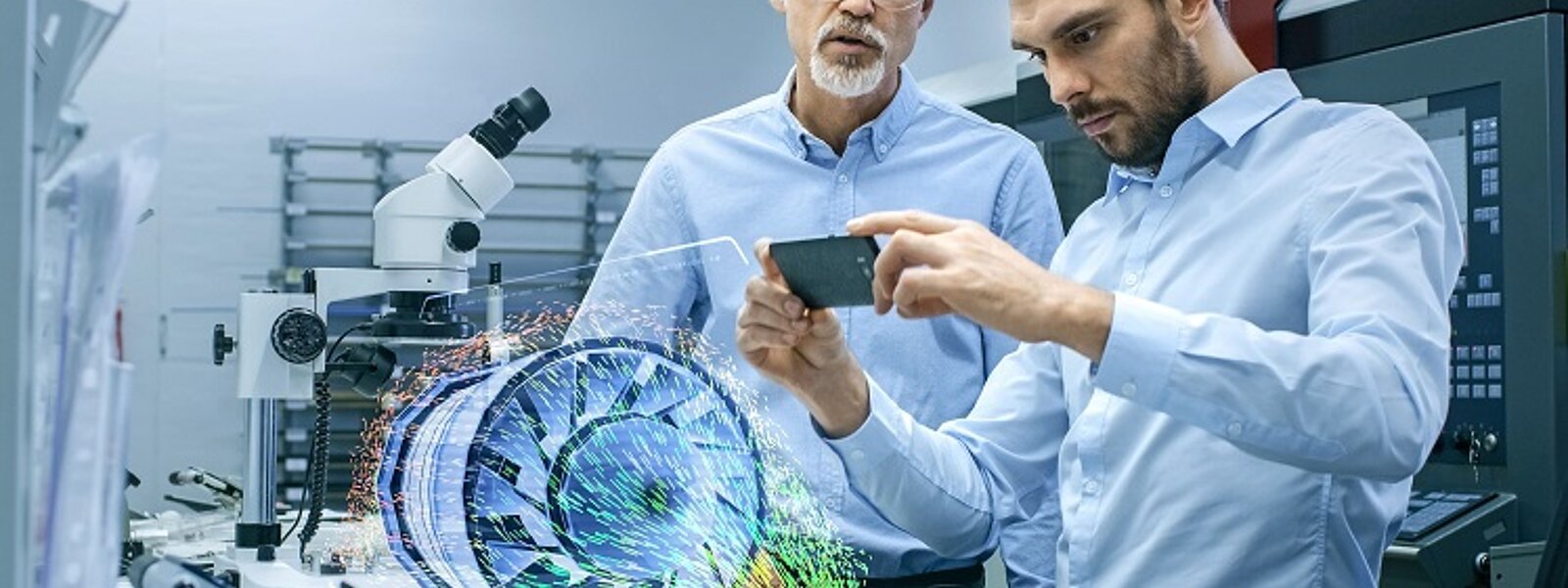Digitalization in the industry
With Industry 4.0, the fourth industrial revolution is in full swing. This time, machines are taking center stage as processes, people and machines become intelligently networked. One technology that deserves special attention: augmented reality. By integrating digital objects and products into reality (as opposed to exclusively digital virtual reality), processes such as maintenance and assembly can be significantly streamlined. The transformation of industry through digitization is no longer a dream of the future, but the huge potential offered by the integration of manufacturing and production with modern IT is still largely untapped.
How quickly will AR pay off for the industry?
That digital solutions and augmented reality make sense for industry is not the question: Where virtual content is currently already being used, it impressively proves how it not only accelerates and simplifies manufacturing processes. From plant planning to actual assembly, maintenance and remote support using Mixed Reality, to training and onboarding of employees and visualization solutions with Augmented Reality in customer contact.
The much more exciting question, which industrial SMEs in particular are asking themselves, is rather: How quickly does AR pay off? The falling costs and rising revenue when using digital solutions are often offset by high initial costs. Spacific's AR solutions remove these investment costs as an entry hurdle for the use of augmented reality in industry. Here you can find out how the use of augmented engineering and augmented reality can look in concrete terms in your industrial sector:

Networking instead of isolated solution
Scalable, flexible and compatible: Spacific's AR solutions for industry aim for the greatest possible synergy effects. On the one hand, they dovetail ideally with each other:
Not only the 3D models created with XR Scan in the course of the planning measurement can be ideally visualized with XR Scene in augmented reality. Photorealistic 3D models for visualization in mixed or augmented reality with XR Scene are created by the photogrammetry app XR Creator.
(We have looked at how networking affects costs and generated sales in sales, for example:
On the other hand, Spacific solutions are designed to be both independent and end-to-end, but at the same time they have been developed to be a meaningful part of larger processes. With simple connection via interface/ API, with maximum freedom in data format and with use in all common programs and on all common devices.
As COTS "off the shelf", this means for industry that digital solutions and augmented reality are available to companies for direct and immediate use in digitized and automated manufacturing and production, without having to first overcome the hurdle of high investment costs.
What exactly is actually ...
... the industry 4.0?
As we use it today, Industrie 4.0 means the industrialization and digitization of production. With networked and automated technologies not only in the machine hall or warehouse, but also in the processes behind them and in the adjacent processes - at suppliers, partners and customers. What is groundbreakingly new here is not the individual components, but the new level of networking - information is available and can be evaluated across companies.
The term was coined within the Industry-Science Research Union in 2011. The committee of experts from science and industry met from 2006-2013 on behalf of the German government to discuss strategies for Germany's future as a high-tech location.
… a Smart Factory?
When networked systems begin to control themselves - for example, by monitoring inventories and reordering independently - this is the first step toward the smart factory. This goal will be achieved when decentralized self-optimization is taken to the extreme to the extent that the majority of decisions are made by machines. This is undoubtedly the best way to achieve ideal business and logistics processes, but as an idea it is also somewhat worrying.
... a digital twin?
The digital replication of processes and components. The data of the digital twin of a production chain, for example, makes it possible to capture all running processes at a glance and, for example, to simulate and test changes virtually first. In this way, planning errors can be avoided, errors can be found, and the bottom line is that time and money can be saved.
… the Internet of Things?
When not only all machines, but also all components are digitally recorded by being equipped with sensors, actuators or chips, a global data infrastructure is created that uses IT to network and interact with physical and virtual objects. In work processes, for example, objects are automatically identified, and the user can now access the information available online hands-free and during the work process using wearables such as the HoloLens 2 data glasses by means of augmented reality, so that processes are not only accelerated, but the error rate is also reduced.... Another goal is for real things to make their status information (such as "operating temperature too high") available on the network.
Read more
We also present our solutions for digitization in industry using augmented reality here specifically for individual industries:
Mechanical Engineering Production Shipbuilding
If you have any further questions, would like specific information or are interested in a personal offer, please feel free to contact us!
![[Translate to Englisch:] Augmented Reality in Industrie und Produktion | Spacific Augmented Reality einsetzen: im Schiffbau](/fileadmin/_processed_/d/f/csm_AR_Schiffbau-min_7b56236eb9.jpeg)

